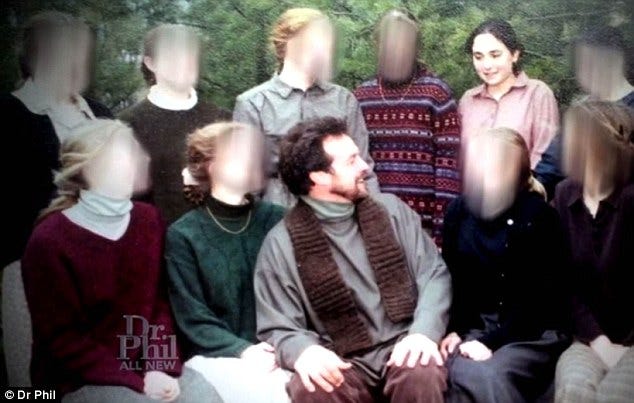An object can be a stand-in for a memory; it could be beautiful or something you wish had never happened. Then there are the objects and symbols that represent trauma: personal, familial, national, and generational. I think of the white poppy and the immeasurable losses experienced during war, and the yellow star, an indelible mark of oppression and separation. A butterfly can often symbolize childhood trauma, and the Norse “valknut” can be a sign of impending death. Then there is the crown of thorns in Christianity, the weeping Buddha, and the wheel of Dharma. And don’t get me started on the power of a lone swastika.
Lindsay Tornambe, the subject of the third season of The Turning podcast, can link the beginning of her trauma to a ring. Three rings, to be exact.
Season Three launched last week and is co-hosted by Erika Lantz and Elin Lantz Lesser. The sisters grew up a few hours away from Lindsay. Still, it might as well have been on another planet. Lindsay generously shares her story from inside the River Road Fellowship, the Minnesota-based cult led by Victor Barnard. After an international manhunt and a year in a Brazilian jail, Barnard was convicted on 59 counts of criminal sexual conduct in 2016.
Families lived at the “Shepherd’s Camp,” 85 remote acres near Finlayson, Minnesota. Lindsay’s parents became involved with Barnard when she was nine and made the move from their home in Pennsylvania not too long after. By the time she turned 13, Barnard had created a special group called “the maidens.” He named ten first-born girls and young women, and parents were encouraged to “give them” to the self-proclaimed disciple. They would live together in a nearby cabin, but once or twice a month, they would be summoned to his cabin for sex. They would help him shower, wake up, and get dressed. At 13, Lindsay Tornambe was one of the youngest.
Lindsay thought she was spending the summer with Victor and the other girls, but she later learned that the arrangement her parents had made was meant to last a lifetime. The girls were bound to Victor Barnard in a wedding-like ceremony, complete with a veil and the sharing of salt (see below). And then, of course, there was the ring.
This ring symbolized so many things: the end of her freedom, the beginning of systematic sexual and emotional abuse, and the reckless and unforgivable abandonment by her parents.
You can see in this video from Rococo Punch that the ring was so small, it won’t go past the second knuckle on Lindsay’s adult-sized finger. (It’s about 30 seconds in)
But more rings came later. Each maiden received a ring with a gemstone as well as a ring with a harp insignia (meant to symbolize the covenant of the maidens).



“I have a dedicated file box where I keep all of my stuff, and sometimes I wonder why I keep it.” I want you to listen to the podcast, so I won't tell you Lindsay’s story, but it’s safe to say that she doesn’t have many physical reminders of her childhood. Sadly, the evidence of being married off at 13 is one of the only things left.

But maybe there is another reason she is holding on? Listen for more.
Take care of your hearts.




